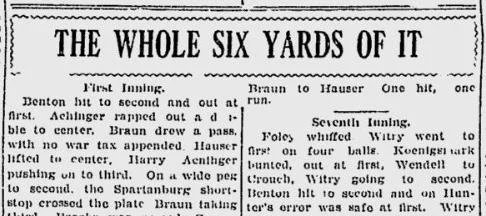22 September 2025
Nike’s famous Just Do It advertising campaign was launched in 1988 and went on to become one of the most famous slogans of all time. But the inspiration for the slogan is somewhat morbid, rooted in the execution of an infamous spree killer.
The campaign was the brainchild of the Wieden+Kennedy ad agency, and co-founder Dan Wieden says he got the idea from the last words of Gary Gilmore. Convicted in Utah of multiple murders in 1976, Gilmore was executed by firing squad in January 1977. The case was notable because Gilmore had refused to appeal the case and had protested stays of execution made on his behalf, and because in 1972 the U. S. Supreme Court had ruled capital punishment unconstitutional but reversed itself in 1976. As a result, Gilmore was the first person executed in the United States after that reinstatement. That, plus Gilmore’s express wish to die, made the case something of a media sensation. For example, prior to the execution, the cast of the comedy-variety show Saturday Night Live had performed a medley of Christmas songs titled “Let’s Kill Gary Gilmore for Christmas.”
Shortly after the execution, Playboy published an interview it had conducted with Gilmore. And Norman Mailer wrote a Pulitzer-prize winning book, The Executioner’s Song, about Gilmore, which was later made into a TV movie starring Tommy Lee Jones as Gilmore. And as late as 1991, an episode of the sitcom Seinfeld was quoting Gilmore’s “immortal” last words.
Those last words were, “Let’s do it.”
In 1988, when tasked with the Nike account, Wieden recalled the phrase and tinkered with it, producing Just Do It. Evidently at the time, Nike was unaware that Gilmore had been Wieden’s inspiration.
Sources:
Greene, David. “In the Immortal Words of Gary Gilmore and NIKE, “[Just] Do It.” Entertainment Agent Blog, 20 June 2010. Archive.org.
Jones, Michael Owen. “Dining on Death Row: Last Meals and the Crutch of Ritual.” Journal of American Folklore, vol. 127, no. 503, Winter 2014, 3–26 at 14. Project Muse.
Peters, Jeremy W. “The Birth of ‘Just Do It’ and Other Magic Words.” New York Times, 19 August 2009, B3. ProQuest Historical Newspapers.
Shapiro, Fred R. The Yale Book of Quotations. Yale UP, 2006, 310.
Image credit: Carolyn Davidson/Nike, 1971. Wikimedia Commons. Public domain image, but subject to trademark restrictions.






